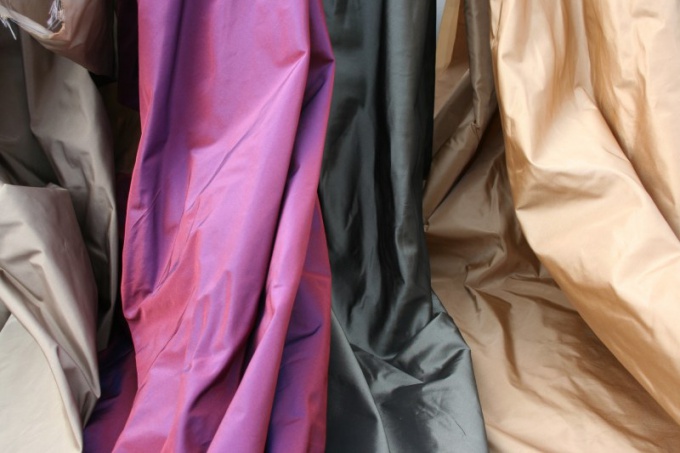You will need
- silk;
- -thin white paper;
- -gelatin or starch.
Instruction
1
Choosing a model for a silk dress, do not overload it with complex details or unusual cuts. Dress will look great, dropping freely. Silk has an unpleasant feature – it is spreading at the seams. The stitching of a narrow, tight stuff is not worth it.
2
To strengthen the seams will help the lining or cover. They will provide the dress a beautiful fit. Sew the lining separately by the same pattern as the dress. Attach the lining wrong side to wrong side. So you hide the stitches, your dress will be professionally stitched things. Case sew seams inside, that is facing the wrong side. Covers are recommended for transparent and translucent silk.
3
Such slippery fabrics like silk, require more time for cutting. To join silk no basting is very difficult. A little trick is to seal the tissue in gelatin or starch, gently applying it with a brush and propadu through the white paper. Carefully select the thread that will sew. Be sure to try the stitch on a piece of tissue. The length of the stitches set small. The choice of suture depends on the style of dress, from the fact whether the seam to impart stiffness or it needs to flow. Very often it happens that the conveyor of the sewing machine tightens the delicate fabric. To avoid this, put under the tissue paper.
4
Follow the direction of the seams. Most sewing machines priporashivajut the lower blade. So, if you stitch one seam on the front sheet, and the second seam at the rear, the difference will be clearly visible.
5
If the chosen dress patterns have Darts, use a simple technique to hide the extra threads. Remove the upper thread from the needle. The bottom thread is the top thread in the opposite direction, from the needle. The end of the thread above the tension mechanism should not be much longer than tuck. Start sewing from the top of the Darts, sleeves, stitches do not. The seam will not leave, he made one thread.
6
Silk fabric is difficult to put the seam. Instead of a soft landing sometimes formed a rough, uneven Assembly. After removal of the thread on thin fabrics can remain visible holes. The problem is solved easily! If you sew a dress with sleeves, sew along the edge details sleeve knitted braid. One edge will support sleeve and the second edge of the wrap cut and Topstitch it on top of the undercut seam.
7
To avoid problems in the processing of the neck, select the appropriate method for silk. It is best to handle the gate edge. You can use the bake, but it will show through the fabric. If the dress has a lining, fold the main fabric with a lining face to face and sew the neckline of a thin seam. Remove the dress and iron the fabric.
Useful advice
Silk does not slip, try to condense it. Dissolve gelatin or starch, gently apply it with a brush on the fabric and iron over the white paper.
